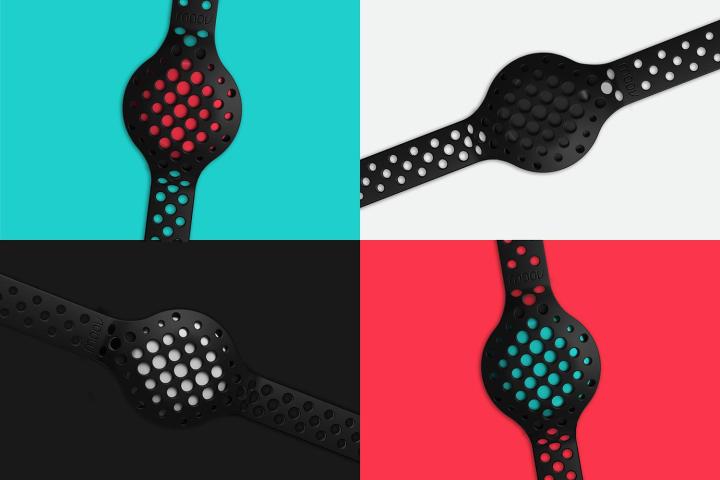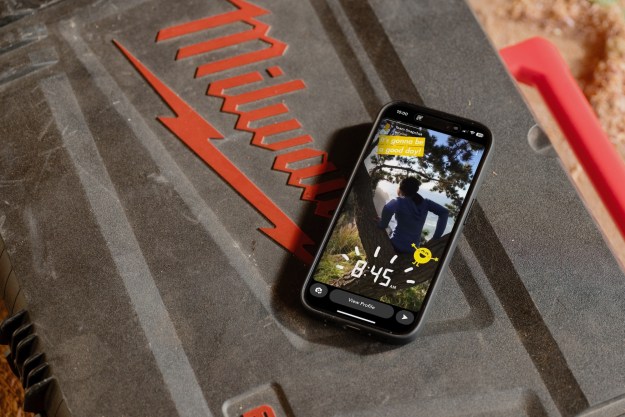Moov made a lot of noise when it debuted the self-titled Moov, a fitness tracker powered in part by artificial intelligence. The pitch? A more personalized fitness tracker, one that could use machine smarts to analyze your activity stats — calories and heart rate, among other metrics — and offer tailored advice. Despite the lofty concept, though, the original Moov was burdened by cumbersome hardware. But no longer: today, Moov announced the Moov Now, a attempt at a more comfortable (but just as intelligent) fitness band.
The Moov Now’s design is best described as “webbed.” The soft, stretchable rubber band is interposed with a hollowed-out dot pattern that makes for a much more breathable wear. And the Moov Now has a much smaller footprint than its predecessor — the circular plastic housing that contains the electronics is about the size of a stack of five quarters. When it’s slotted into the Moov Now’s bulging center pouch, the thing looks sort of like an egg sack.
The hardware — several different sensors, a replaceable battery that lasts about six months, and Bluetooth — records much the same data as other wearables. It counts your steps, measures the distances you’ve walked, jogged, or run, calculates calorie burn, and monitors sleep — nothing exotic. But, Moov argues, stats are just half the story — the Moov Now’s true value lies in the way it handles that data.
Moov Now worked with coaches at Stanford to develop 10 program apps across five activities: running, swimming, cycling, boxing, and interval training. An artificially intelligent assistant audibly guides you through the selection of one of 200 variations of workouts and, during the workout, lets you know how well you’re doing — whether you need to jog faster or bike harder to meet your daily fitness goal, for instance. You can ramp up the intensity of a workout in progress, or turn on a “reduced coaching” mode (that is, tell the thing to pipe down) if you desperately need a breather.
Boxing and running get special attention. Strap the Moov Now on your ankle and the AI will offer specific suggestions on form, like when and with how much force you should push off the ground. And boxing, thanks to 3D depth sensors in the Moov Now, can be tracked with a high degree of accuracy — it recognizes the difference between a hook and a jab, a punch and an uppercut.
Moov is clearly gunning for traction with the Moov Now. The startup has aggressively priced the new wearable — it’s $59 during the pre-order period and $99 when it launches this fall — and says it plans to add more fitness programs to the smartphone app, and to do so often.
But the Moov Now will likely live or die on the usefulness and accuracy of its artificial intelligence. So long as it’s a logical improvement over its predecessor’s technology, Moov has nothing to worry about — the first-generation Moov is the highest rated fitness tracker on Amazon.
The Moov Now will be available in blue, red, white, and black.
Editors' Recommendations
- The app for your Garmin wearable is getting a huge overhaul
- OxeFit XS1 tracks your workout form and suggests real-time improvements
- The Fitbit Luxe helps you manage your stress levels — and look good doing so
- Alexa can now set sleep timers to simulate a sunrise using your smart lights
- Xiaomi Mi Smart Band 4 impressions: All the fitness tracker you need




